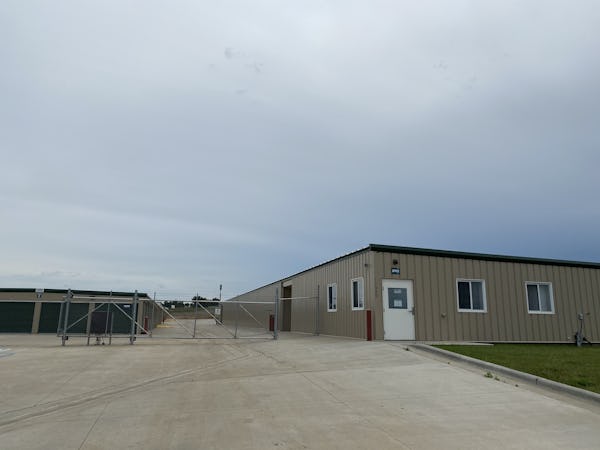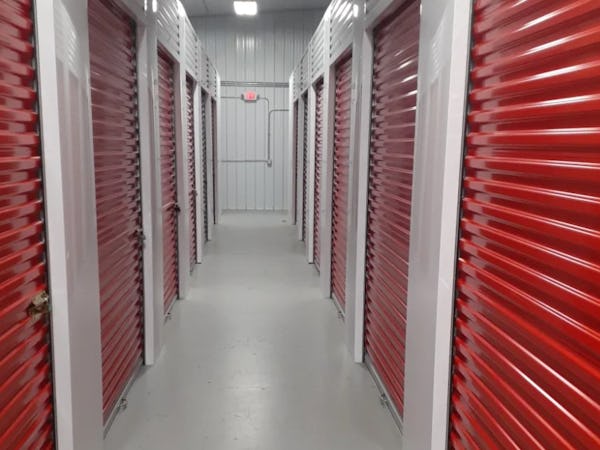Sign in
By creating a member account and using this site you agree to our Terms of Use. This site is protected by reCAPTCHA and the Google Privacy Policy and Terms of Service apply.
From Labor Statistics to Industrial Storage Space: An Analysis of North Dakota's Leading Industries
Introduction to North Dakota's Leading Industries North Dakota, a state known for its rich natural resources and robust agricultural sector, has been making great strides in other industries as well. The state's leading industries such as manufacturing, transportation, and healthcare have been pivotal in driving its economy and providing employment opportunities to its residents. This article takes a closer look at these industries, analyzing the labor statistics, and exploring the interplay between manufacturing and transportation in North Dakota.
North Dakota's economy is diverse, encompassing various sectors that contribute to its growth and prosperity. The state's strategic location, coupled with its abundant natural resources, has made it a hub for various industries, including agriculture, manufacturing, and transportation. These industries have not only shaped the state's economic landscape but have also played a significant role in its social and cultural development.
As we delve deeper into North Dakota's industrial landscape, it becomes evident that the state's economy is not reliant on a single sector. Instead, it thrives on the synergistic interaction of multiple industries, each contributing to its overall economic health and stability.
Unpacking North Dakota's Industrial Statistics
To understand the economic dynamics of North Dakota, it is crucial to consider the industrial statistics. These data points provide insights into the state's economic performance, revealing the sectors that are thriving and those that need more attention. They also bring to light the potential areas of growth and investment, guiding stakeholders in making informed decisions.
North Dakota's industrial statistics reveal a robust manufacturing sector that contributes substantially to the state's GDP. The state's manufacturing industry, which includes food processing, machinery production, and petroleum refining, is a major engine of growth, employing thousands of people and generating significant revenue. In addition, the transportation industry, which plays a vital role in facilitating trade and commerce, also contributes significantly to the state's economy.
Furthermore, the healthcare sector in North Dakota has seen remarkable growth in recent years. With an aging population and the increasing demand for healthcare services, this sector has become a major employer in the state. The education sector, too, has grown significantly, contributing to the state's economy and playing a crucial role in its social development.
According to North Dakota Labor Market Information (NDLMI) the state’s top 5 largest employers are:
- Sanford Health
- Walmart
- Doosan Bobcat
- University of North Dakota
- Catholic Health Initiatives (CHI)
All of these industries have a huge impact in state’s economic growth. In 2022, North Dakota’s total GDP reached $54.6 billion, ranking 44th out of all of the 50 US states. The largest industry by revenue was corn, wheat and soybean wholesaling which generated a total of $12.2 billion of the state’s GDP.
The Vital Role of Manufacturing in North Dakota
Manufacturing plays a vital role in North Dakota's economy. The state's manufacturing sector is diverse, encompassing industries such as food processing, machinery production, and petroleum refining. It is a major contributor to the state's GDP and a significant source of employment.
In 2021, the total manufacturing output was $4.54 billion, representing a percent share of 7.30% of the state’s total GDP.
Manufacturing in North Dakota, in many ways, is the backbone of the state's economy. It provides jobs, generates revenue, and drives innovation. The state's manufacturing sector is also closely linked to other industries such as agriculture, transportation, and logistics, creating a holistic economic ecosystem.
Moreover, manufacturing in North Dakota is not just about producing goods. It's about creating value. The state's manufacturing sector is known for its high-quality products, innovative processes, and commitment to sustainability. This value creation has helped North Dakota's manufacturing industry gain a competitive edge, attracting investment and fostering economic growth.
Labor Statistics: A Look at the Workforce in North Dakota
Labor statistics provide a wealth of information about a state's workforce, including data on employment, wages, and working conditions. In North Dakota, labor statistics reveal a resilient workforce that has weathered economic ups and downs and continues to drive the state's economy.
North Dakota's workforce is diverse, comprising individuals from various educational backgrounds and skill levels. The state's labor statistics show a high employment rate, with most of its residents engaged in full-time employment. The manufacturing and transportation sectors, in particular, employ a significant portion of the state's workforce.
Furthermore, North Dakota's labor statistics reveal a positive trend in wages, with average wages in the state increasing over the years. This upward trend in wages, coupled with the state's low cost of living, contributes to a high standard of living for its residents.
The unemployment rate of the state has remained steady at 2.1% since 2022 and North Dakota’s counts also with a labor force rate of 69.7%
The Importance of the Transportation and Storage Space Industry in North Dakota
The transportation and storage space industries play a crucial role in North Dakota's economy, facilitating trade and commerce and providing essential services to its residents. The state's strategic location, with access to major highways, rail networks, and waterways, has made it a vital transportation hub.
The transportation and storage space industries in North Dakota are diverse, encompassing freight transportation, passenger transportation, logistics, and warehousing. It is a major source of employment in the state, providing jobs to thousands of residents. The industry also contributes significantly to the state's GDP, generating substantial revenue. In 2021 the Warehousing and Storage industry generated $45 million of dollars.
Moreover, the transportation and storage space industries in North Dakota play a crucial role in supporting other industries. They facilitate the movement of goods produced by the manufacturing sector, support the agricultural sector by transporting farm produce, and provide essential services to the healthcare and education sectors.
The Interplay between Manufacturing and Transportation in North Dakota
In North Dakota, the manufacturing and transportation industries are closely intertwined. The success of the manufacturing sector relies heavily on the efficient functioning of the transportation sector, and vice versa.
The manufacturing sector in North Dakota produces a wide range of goods, from food products to machinery. These goods need to be transported to various markets, both within the state and beyond its borders. This is where the transportation sector comes in. It facilitates the movement of goods, ensuring that they reach their intended destinations in a timely and efficient manner.
Conversely, the transportation sector relies on the manufacturing sector for its functioning. The vehicles and equipment used in transportation are produced by the manufacturing sector. Furthermore, the manufacturing sector provides jobs to many residents, who in turn use transportation services, creating demand for the transportation industry.
How Labor Statistics Influence North Dakota's Industries
Labor statistics influence North Dakota's industries in several ways. They provide insights into the state's labor market, revealing trends in employment, wages, and working conditions. These insights guide businesses in their decision-making processes, helping them plan their operations, manage their workforce, and strategize for growth.
For instance, labor statistics can reveal the sectors with the highest employment rates, indicating where the demand for labor is high. Businesses in these sectors can then plan their hiring strategies accordingly. Similarly, labor statistics can provide information on wage trends, guiding businesses in setting competitive wage rates.
Furthermore, labor statistics can reveal trends in working conditions, providing insights into worker satisfaction and productivity. Businesses can use this information to improve their workplace practices, enhance worker satisfaction, and boost productivity.
Future Predictions for North Dakota's Leading Industries
As we look ahead, the future of North Dakota's leading industries seems promising. The state's robust manufacturing sector is expected to continue its growth trajectory, driven by innovation, investment, and a skilled workforce. Similarly, the transportation industry, buoyed by the state's strategic location and efficient infrastructure, is poised for growth.
Moreover, emerging sectors such as healthcare and education are expected to grow significantly, driven by demographic trends and the increasing demand for these services. These sectors are likely to provide abundant employment opportunities, contributing to the state's economic growth and social development.
However, these predictions are not without their challenges. Issues such as labor shortages, technological disruptions, and environmental concerns could impact the growth of these industries. Therefore, strategic planning, investment in human capital, and sustainable practices will be crucial for the future success of North Dakota's leading industries.
Opportunities for Growth and Investment in North Dakota
North Dakota offers numerous opportunities for growth and investment. The state's robust manufacturing sector, efficient transportation industry, and emerging sectors such as healthcare and education present a myriad of investment opportunities.
Investors can explore opportunities in manufacturing, particularly in areas such as food processing, machinery production, and petroleum refining. With a skilled workforce, abundant raw materials, and a conductive business environment, North Dakota's manufacturing sector offers a promising investment landscape.
Similarly, the transportation sector in North Dakota offers significant investment opportunities. With its strategic location and efficient infrastructure, the state's transportation industry is primed for growth. Investing in areas such as freight transportation, logistics, and warehousing could yield significant returns.
Furthermore, the healthcare and education sectors in North Dakota present ample opportunities for growth and investment. With an aging population and the increasing demand for healthcare and education services, these sectors are set to grow significantly in the coming years.
Conclusion: What the Statistics Tell Us About North Dakota's Economy
In conclusion, North Dakota's economy is diverse and robust, driven by a synergy of multiple industries. The state's leading industries such as manufacturing, transportation, healthcare, and education contribute significantly to its economic growth and prosperity.
The industrial and labor statistics reveal a resilient economy that has weathered economic ups and downs. They provide insights into the state's labor market, guiding businesses and stakeholders in their decision-making processes.
Looking ahead, the future of North Dakota's leading industries seems promising, offering numerous opportunities for growth and investment. However, strategic planning, investment in human capital, and sustainable practices will be crucial for the future success of these industries. As North Dakota continues on its path of economic growth, it stands as a testament to the power of diversity, resilience, and innovation in driving economic prosperity.






























